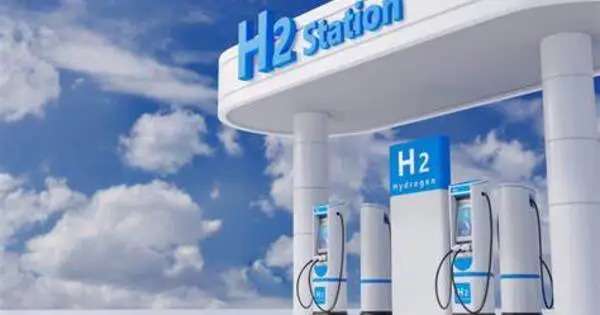A hydrogen station, also known as a hydrogen filling station or a hydrogen refueling station, is a facility that distributes hydrogen fuel to automobiles powered by hydrogen fuel cells. Hydrogen is distributed by weight. There are two common filling pressures: H70 (700 bar) and H35 (350 bar), which is an earlier standard. As of 2021, over 550 filling stations were available worldwide. These stations are critical in providing the infrastructure required for widespread adoption of hydrogen fuel cell vehicles (FCVs).
Hydrogen stations typically store hydrogen in either compressed gas or liquid form. Compressed hydrogen is stored in high-pressure tanks, whilst liquid hydrogen is kept in cryogenic tanks. When a hydrogen fuel cell vehicle arrives at the station, it connects to the dispenser and hydrogen is transferred into the vehicle’s tank, similar to refueling a gasoline or diesel vehicle.
Delivery methods
Hydrogen fueling stations are classified as either off-site (hydrogen is delivered by truck or pipeline) or on-site (hydrogen is produced and compressed for use in automobiles).
Hydrogen stations come in a variety of sizes and capacities, ranging from tiny fleet stations to larger consumer stations. They may also provide extra services, such as hydrogen car maintenance or teaching resources on hydrogen technology.
One of the obstacles to the widespread adoption of hydrogen fuel cell vehicles is the establishment of a sufficient network of hydrogen stations to offer enough refueling infrastructure. Efforts are being made in various places across the world to increase the number of hydrogen stations to serve the growing fleet of FCVs and encourage more consumers to consider hydrogen as a clean alternative to traditional fossil fuels.
















